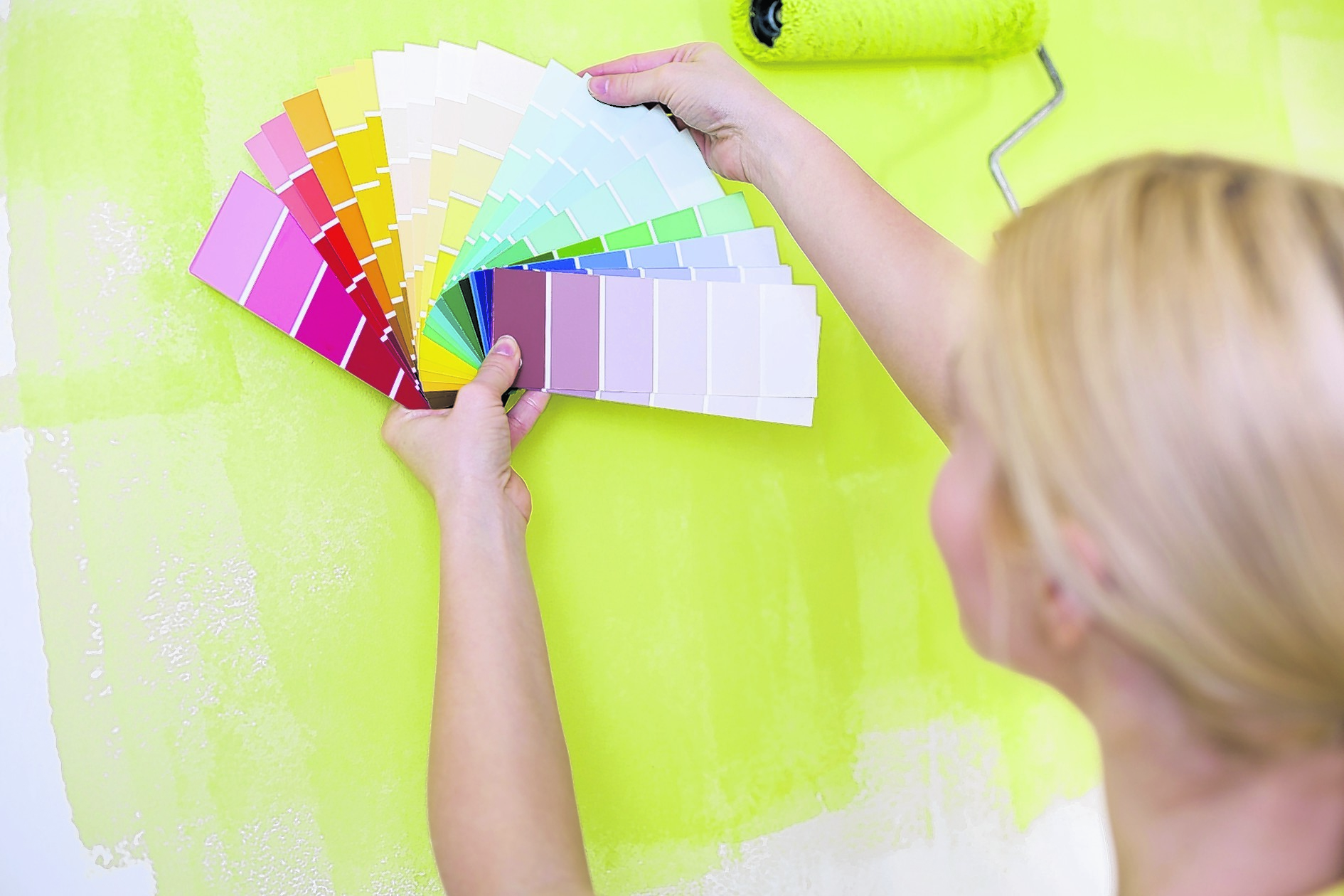Colour can be a bit of a minefield if you’re not confident about using it in your home, but there are ways to make the process easier.
1. It’s not advisable to use a paint colour you don’t know without trying it first – don’t rely on printed colour cards, colours on computer screens, the colour on the tin, or the colour of the wet paint, as these can be misleading. Occasionally, colour cards are painted and these are, of course, more reliable than printed ones.
2. The only way to get an accurate idea of what a particular colour will look like in a particular room is to paint a little on the wall, preferably all the walls, and let it dry. Then live with it for at least a few days so you can see it in different lights and at different times of the day. A colour can look different in natural light and artificial light, and even in different types of artificial light.
3. Be careful when buying white emulsions, as some pure brilliant whites are more cream than white. Again, it’s advisable to try a little first because there’s no way of knowing which pure brilliant whites aren’t very white, unless you’re familiar with them. If a paint is just called ‘white’, it’s probably cream, but this isn’t always the case.
4. You may want to take account of the way a room faces when choosing paint colours. North-facing rooms can be a challenge because the light is cold – steer clear of colours with a grey or green base and consider yellows and creamy neutrals for a lighter, cheerier feel. Sunny south-facing rooms are much easier, as most colours work well. Rooms that face west are also easy to decorate – whites work particularly well – whereas east-facing rooms suit blues and greens best.
5. Other things can affect your choice of wall colour, such as the colour of the flooring, window treatments, furniture and accessories,
if you predominantly use the room at a certain time of day, and whether
you want to create a dark and moody or light and airy feel, or something in between. If you’re not sure what you want, feature walls are a good way to enjoy a limited amount of colour in a room and aren’t difficult to repaint if you change your mind.
